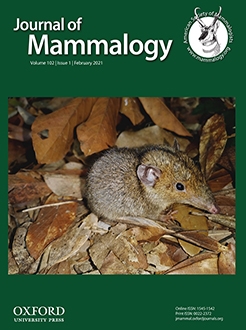Studying how different environmental parameters, such as resource availability and ambient temperature, affect growth rates aids to understand the evolution of different growth strategies. Low levels of food availability restrict growth, and high ambient temperature can constrain growth via trade-offs between body temperature maintenance and heat produced during digestion. We studied growth of African striped mice (Rhabdomys pumilio), a small mammal living in a seasonally arid habitat. Striped mice are born during spring with high food availability and low ambient temperature, and typically enter the food-restricted dry season before reaching adulthood. We predicted low food availability and high ambient temperature would negatively affect growth. We therefore expected an extended period of slow growth during the long dry season. We repeatedly measured body length of 369 free-living individuals, examined how ambient temperature and food availability influenced growth rate, and seasonal changes in growth rate. In addition, we investigated whether mice (N = 27) born in summer (atypical breeding season) have slower growth rates than those born in spring. Growth rate increased with increasing food availability and decreased with increasing ambient temperature. Individuals born in summer grew slower than those born in spring. Sexes reached asymptotic body length at 258 days (females) and 285 days (males), which is an unusually long growth period compared with other small rodents. As most striped mice live for less than 1 year, this period encompasses the entire life for most individuals, but stops at old age, which could indicate senescence. Our results demonstrate a positive influence of food availability on growth, a relationship mediated by ambient temperature. We conclude that striped mice enter the food-restricted dry season before postnatal growth is terminated, and early exposure to harsh environmental conditions during the long dry season likely explains the prolonged growth period in striped mice.
How to translate text using browser tools
22 January 2021
Prolonged growth during the food-restricted dry season in a small African mammal
Rebecca Rimbach,
Neville Pillay,
Carsten Schradin
ACCESS THE FULL ARTICLE

Journal of Mammalogy
Vol. 102 • No. 1
February 2021
Vol. 102 • No. 1
February 2021
eco-physiology
pace-of-life
Plasticity
postnatal growth
rodents
senescence




